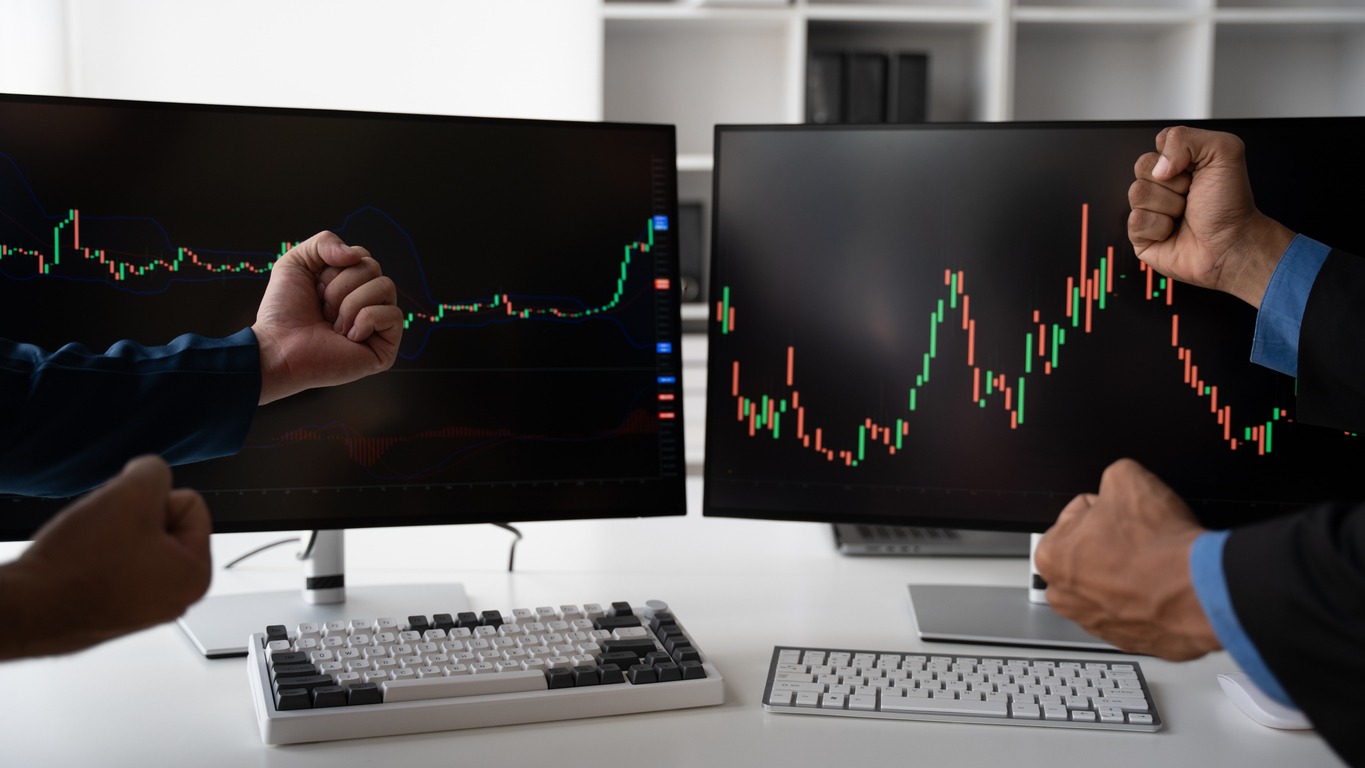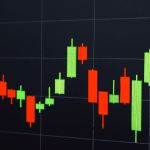Proprietary trading (“prop trading”) is when a firm uses its own capital-rather than client money-to take positions, provide liquidity, and capture edge from market inefficiencies. In semantic terms, the core entity is the prop firm; its attributes are speed, risk appetite, modeling capability, and execution quality; its relationships span exchanges, brokers, clearing venues, and data providers; and its functions include market making, arbitrage, and directional strategies.
Why prop trading matters (cause → effect)
- Liquidity provision → Tighter spreads. Market-making props quote both sides of the book, absorbing inventory risk. Their competition compresses bid-ask spreads and reduces transaction costs for everyone.
- Continuous arbitrage → Better price discovery. When props close gaps across venues, instruments, or time horizons, prices reflect information more accurately and quickly.
- Risk warehousing → Smoother execution for others. By taking the other side of hedges or facilitating block trades, props help institutions offload risk when it matters.
- R&D flywheel → Market infrastructure upgrades. The arms race in data, networks, and execution algorithms pushes brokers, exchanges, and even regulators to modernize.
Strategy taxonomy (types & subtypes)
Market making focuses on earning the bid–ask spread while tightly managing inventory and the constant risk of adverse selection. It lives and dies by speed and craftsmanship: low-latency infrastructure, microstructure-aware quoting, and real-time risk controls are non-negotiable. The game is to provide liquidity without becoming the liquidity.
Statistical arbitrage targets predictable dislocations-mean reversion, factor spreads, and cross-asset mispricings-by harvesting small, repeatable edges. Signal construction spans pairs and baskets, lead–lag effects, intraday seasonality, and other micro-alpha patterns. The edge is less about calling the market and more about letting the law of large numbers do the heavy lifting.
Event-driven and merger arbitrage price the probability and timeline of corporate catalysts. Returns hinge on understanding legal processes, settlement pathways, and borrow availability, then marrying that insight with historical resolution data. No hero calls-just probabilities, payoffs, and path-dependence.
Options and volatility strategies trade the gap between implied and realized volatility, as well as skew and term structure across maturities. The toolkit includes robust vol-surface modeling, Greeks aggregation at portfolio level, cross-venue routing, and dispersion frameworks to isolate idiosyncratic vol from index beta. Risk is convex; so are the controls.
Systematic macro and trend aim to capture persistent risk premia across futures, rates, FX, and commodities. Positioning adapts through dynamic risk budgets, correlation-aware scaling, and regime-sensitive allocation, seeking durable exposure to momentum, carry, and term effects without over-concentrating in any single theme.
Finally, latency and execution alpha improve outcomes even when you’re not predicting direction. Smart order routing, venue selection, and queue-positioning mechanics reduce slippage, enhance fill quality, and protect alpha at the last mile. Edge earned here is edge you don’t have to find elsewhere.
The prop trading process
- Data acquisition
Tick-by-tick market data, order book states, corporate actions, alt-data streams. Key attributes: coverage, latency, and model-ready cleanliness. - Signal research
Hypothesis generation → feature engineering → stationarity checks → leak prevention. Emphasis on generalization beyond backtests. - Backtesting & stress
Matching engine simulation, queue modeling, and realistic fill logic to avoid overfitting. Replay crisis regimes to test drawdown behavior. - Portfolio construction
Risk-parity vs. conviction-weighted; orthogonality checks; capacity-aware scaling; transaction-cost models baked in. - Execution
VWAP/TWAP variants, POV, liquidity seeking, and bespoke algos. Latency management and adverse selection mitigation are central. - Post-trade analytics
Slippage attribution, venue and broker scorecards, limit vs. market usage analysis, and feedback loops into models.
Attributes that define top prop firms
Speed and systems reliability are table stakes: microseconds decide queue priority and re-quoting agility. Risk culture is codified-clear stop-loss logic, exchange circuit-breaker integration, and scenario-aware limits that curb exposure before it compounds. Capital efficiency is a strategy: prime-broker relationships, margin optimization, and netting keep turnover high and carry low.
Talent density wins-cross-functional pods of quants, engineers, microstructure specialists, and risk managers compress the idea-to-production loop. Governance is built in, not bolted on: independent model validation, real-time surveillance, and compliance-by-design engineering.
Prop firms vs. hedge funds vs. retail-funded props
- Capital source: Props deploy house capital; hedge funds manage client capital with mandates; retail-funded props finance traders after evaluations.
- Constraints: Hedge funds operate under investor guidelines and redemption risks; props are freer but must safeguard firm solvency; retail-funded props enforce strict daily loss and consistency rules.
- Payout & incentives: Props often use high profit splits tied to risk usage; hedge funds charge management/performance fees; retail-funded props monetize evaluations while offering scaled accounts to consistent traders.
- Time horizons: Props skew intraday to short-term with high turnover; hedge funds span multiday to multiquarter; retail-funded traders vary but often focus on liquid futures or FX.
If you’re comparing retail-funded prop platforms-payout policies, evaluation structures, drawdown logic, and platform reliability-start with Best Props to benchmark rules, costs, and technology side by side.
Regulatory and ethical vectors
- Conflict management: Separating client-facing businesses from prop activity prevents misuse of order flow.
- Market integrity: Surveillance for spoofing/layering, manipulation-resistant algos, and clear escalation paths.
- Data governance: Strict controls on alt-data provenance, PII handling, and model access logs.
- Global heterogeneity: Rules differ across regions; firms must design compliance that travels-KYC/AML, market-abuse regimes, and reporting.
Future signals: how prop trading will shape markets next
Agentic, AI-first trading stacks are shifting models from static predictors to autonomous agents with explicit goal functions-balancing alpha, cost, and risk-while reasoning over order types, venues, and timing.
As market microstructure converges-with T+1 settlement widening and tick/lot rules becoming more uniform-cross-venue arbitrage compresses faster, raising the bar for genuine edge discovery. With alt-data now table stakes, advantage migrates to durable feature pipelines and faster model-iteration cycles. Execution becomes alpha: superior venue selection, navigation of dark/hidden liquidity, and disciplined queue strategy will outrun raw signal alone.
And as tokenized, 24/7 markets proliferate, reliability engineering, automated risk oversight, and global liquidity routing turn from nice-to-haves into non-negotiables.
What this means for traders, brokers, and the broader market
- For traders: The durable edges are repeatable process, risk discipline, and execution craft. Treat slippage and borrowing cost like first-class features in your models.
- For brokers/venues: Latency, reliability, and clean cancel/replace semantics determine flow quality. Offer transparent fee schedules and rich post-trade analytics.
- For the market: More competition among props typically yields tighter spreads and quicker absorption of shocks-provided risk controls and surveillance keep pace.
FAQs
Is prop trading only about speed?
No. Speed is necessary for some edges but not sufficient. Research quality, risk control, and execution design often dominate P&L persistence.
How do prop firms manage big drawdowns?
With layered limits: per-instrument, per-strategy, daily and monthly loss caps, and automatic cutouts. Robust firms rehearse incident response like disaster recovery.
Can retail traders thrive in prop settings?
Yes-if they align strategy with rules (e.g., futures vs. FX, intraday vs. swing), understand evaluation criteria, and keep variance in check.
Are AI models replacing traders?
They’re augmenting them. Human oversight still sets objectives, validates models, and governs risk. The winning loop is human judgment + machine execution.
Proprietary trading accelerates innovation, compresses spreads, and professionalizes execution across asset classes. As AI-native workflows, alt-data, and 24/7 markets expand, prop firms will continue to act as catalysts-pulling market infrastructure forward and setting the standards everyone else eventually follows.















